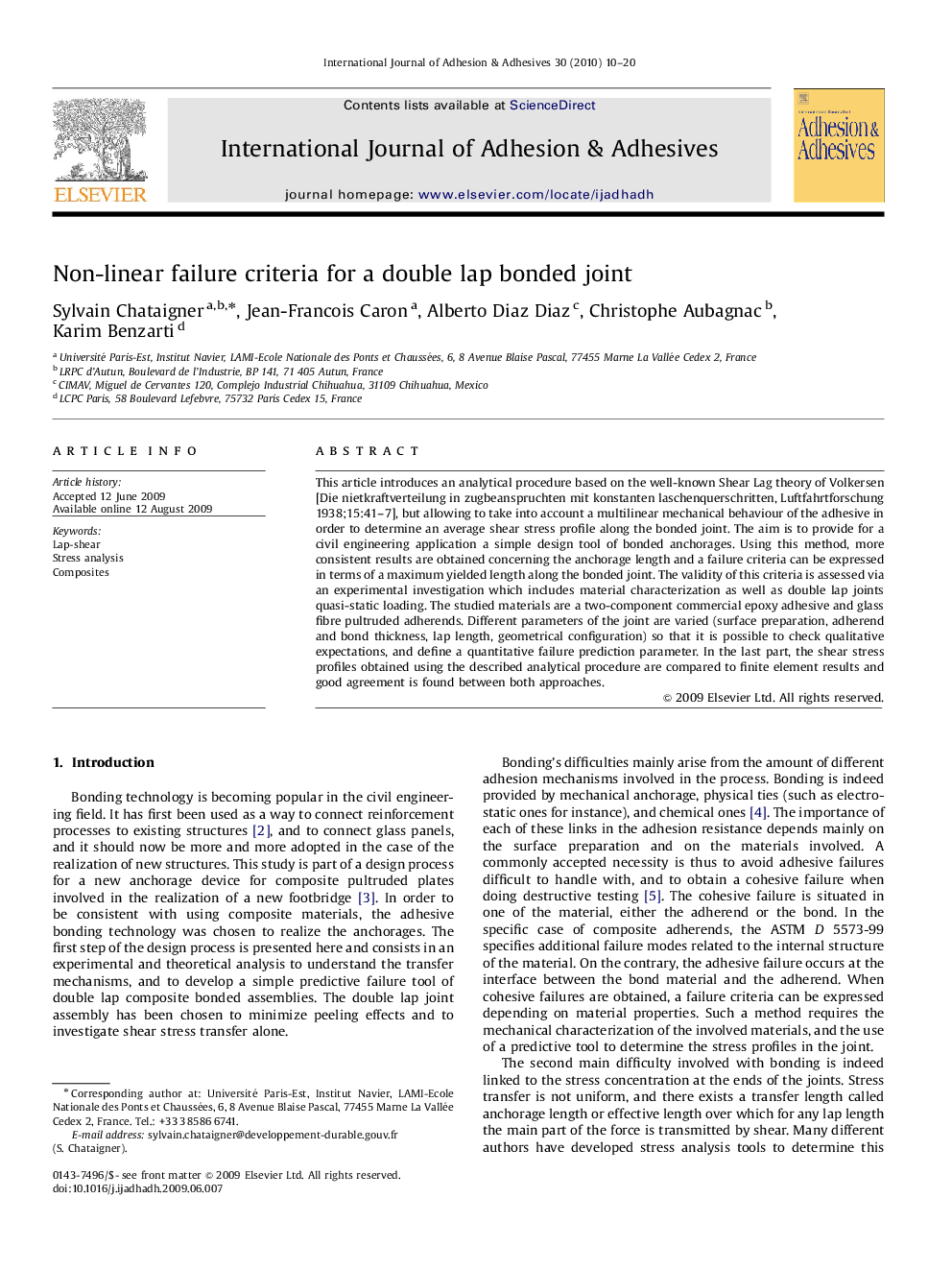| Article ID | Journal | Published Year | Pages | File Type |
|---|---|---|---|---|
| 780084 | International Journal of Adhesion and Adhesives | 2010 | 11 Pages |
This article introduces an analytical procedure based on the well-known Shear Lag theory of Volkersen [Die nietkraftverteilung in zugbeanspruchten mit konstanten laschenquerschritten, Luftfahrtforschung 1938;15:41–7], but allowing to take into account a multilinear mechanical behaviour of the adhesive in order to determine an average shear stress profile along the bonded joint. The aim is to provide for a civil engineering application a simple design tool of bonded anchorages. Using this method, more consistent results are obtained concerning the anchorage length and a failure criteria can be expressed in terms of a maximum yielded length along the bonded joint. The validity of this criteria is assessed via an experimental investigation which includes material characterization as well as double lap joints quasi-static loading. The studied materials are a two-component commercial epoxy adhesive and glass fibre pultruded adherends. Different parameters of the joint are varied (surface preparation, adherend and bond thickness, lap length, geometrical configuration) so that it is possible to check qualitative expectations, and define a quantitative failure prediction parameter. In the last part, the shear stress profiles obtained using the described analytical procedure are compared to finite element results and good agreement is found between both approaches.
